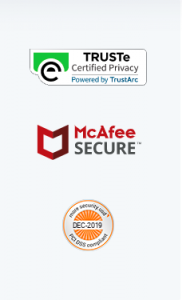The Analytical Book Report is a formal paper and therefore must conform to the
guidelines of one. Please use MLA-style format. The analysis must reflect the
student’s best effort. Here are some additional requirements that must be
employed when writing this report:
1) Papers are to be typed, double-spaced on white, unlined 8.5×11 paper.
2) The font should be between 10-12, clear and no fancy or funny forms.
3) Never generalize. Be specific. Utilize facts, quotes, and other information to
substantiate your remarks.
4) Margins must be consistent on all pages. Recommended margins are 1 inch on
all four sides.
5) Proofread and edit the report before submitting the final copy.
Writing a book review as an assignment in a history course has at least four
important objectives (1) effective writing, (2) a substantive knowledge about a
particular historical topic, (3) an understanding of the nature and use of historical
research, and (4) an ability to think critically about the work of others. A typical
summary “book report” can at best teach only the first two competencies. A book
review goes beyond mere summary to inquire into the overall worth of a book.
There are several steps to preparing a review of an historical work.
1. Select a Book. You will find that locating an appropriate work can be a very
important part of the learning process. Start, of course, with the Suggested
Readings after each chapter in the text and with the card catalog in the college
library. Check standard bibliographies, and try consulting the footnotes or
bibliographies of other works. When you locate a likely book, give it a “once
over.” Glance at the table of contents and the bibliography and read the
prefatory material to make sure that the book is appropriate to your
assignment. Ask yourself if the topic seems interesting, for you will probably
write a better review if you have some interest in the subject. If you still have
trouble, talk me. I’ve read many books and have graded hundred of reviews.
2. Determine the Purpose of the Book. The best place to discover this is usually in
the preface, forward, or introduction. What demand did the author intend to
fulfill with the book? Did she write because there was no satisfactory work
available on the subject? Did she feel that she had a new point of view on a
well worn topic? Perhaps she wrote a popular account of a subject about
which previous works had been dry and dull. Determine the audience for
which the work was intended. Was the work directed mainly at professional
historians, at college students or the general public? Ascertaining the author’s
purpose is important, for, assuming that the purpose is worthwhile, the writer
should be judged by whether she achieved what she set out to accomplish.
3. Read the Book. Read critically and analytically. Be sure to identify the author’s
thesis-the main argument of the book. Look for secondary theses and other
important points. See how the author uses evidence and examples to support
her arguments. Are her sources adequate and convincing? Does she rely
mainly on primary-first-hand, documentary sources or on secondary sources?
Consider the author’s style and presentation. Is the
book well organized? Is the prose, lively, direct, and clear? Take notes as you
read so that you can return to particularly important passages or especially
revealing quotations. Remember that being critical means rational and
thoughtful, not necessarily negative. BOOK ANALYSIS RUBRIC
OUTSTANDING EXCELLENT NEEDS IMPROVEMENT UNSATISFACTORY SCORE
SUMMARY Summary consists of a discussion Summary consists of a discussion Summary consists of a discussion of Summary is mostly an outline of
of major themes and ideas of major themes and ideas major themes and ideas the book and does not discuss
10 pts providing at least 4 providing at least 3 providing at least 2 excerpts from the themes or major ideas of the work.
excerpts from the work. It combines excerpts from the work. It combines work. It combines ideas from the There may be one direct quote
ideas from the book into new ideas from the book into new book into new sentences using your “thrown in” for effect.
sentences using your own words. sentences using your own words. own words.
QUOTES All direct quotes from the book are 2 or 3 direct quotes from the book 1 or 2 direct quotes from the book are The summary contains direct
noted by citing page numbers in are noted by citing page numbers in noted by citing page numbers in quotes without any citation of
10 pts parenthesis. e.g. (48) (no more than 5) parenthesis. Quotes overused parenthesis. e.g. (48) page numbers.
AUTHOR & Student provides a detailed discussion of Student provides a limited discussion Student provides little discussion of The discussion of author and sources
SOURCES the author?s qualifications. Sources were of the author?s qualifications. Sources the author?s qualifications. Sources is vague or missing and lacks detail.
examined in detail and the student are examined in a limited manner, and may or may not be briefly examined.
determined whether or not they were the analysis may be limited.
20 pts appropriate for the work.
CRITIQUE Critique consists of thoughts, Critique consists of thoughts, Critique consists of thoughts, Critique consists of a basic opinion
responses and reaction to the book. responses and reaction to the book. responses and reaction to the book. based on personal feeling of “I
The student reviewer reacts to the The student reviewer may discuss The student may discuss only liked it” or “I hated it” and is not
themes, the author’s aims or intent, only two aspects, for example, one aspect of the book, such as considered a critique because it
20 pts the subject of the book, how well it is themes and writer’s style. There is not themes. This review just states, ‘Well, does not focus on themes, author’s
written and overall success or failure a thorough review of various aspects. I liked it.” or ‘Well, I hated it.” It lacks a intent, or writer’s style.
of the book. critical eye.
ORGANIZATION Structure of the paper flows and is Structure of the paper flows and is Structure of the paper does NOT follow Structure of the paper does NOT
easily read because of smooth easily read, but 1 or 2 transitions may a logical order. The writing or ideas follow a logical order. There are no
transitions from paragraph to be faulty or missing. There is some may “jump” around; it is not cohesive. transitional phrases that make it
10pts paragraph. The sequence of topics is illogical order in sequence of topics. there is not a clear introduction, easy to read the paper…OR…
in logical order. There is a clear cut There is a clear cut introduction, body or conclusion. review is just a copying of
introduction, body, and conclusion. and conclusion. the original book.
MECHANICS Uses complete sentences and a Uses complete sentences and a There are 1-2 incomplete sentences There are more than 2 incomplete
variety of sentence types. variety of sentence types. or fragments. There are also run-on sentences or fragments. There
10 pts sentences. are more than 2 run-ons.
SPELLING 0-2 spelling errors 3-5 spelling errors 6-8 spelling errors Over 9 spelling errors
10 pts
FORMAT 0-2 formatting errors 3-5 formatting errors 6-8 formatting errors Over 9 formatting errors
10 pts
Source ( adapted) James Madison University


